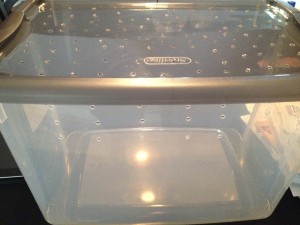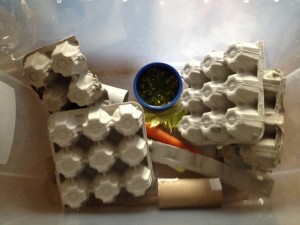How to set up your own feeder roach colony
Care Sheet, DIY, Information 1 Comment »How to set up your own feeder roach colony! As your collection of Tarantulas gets bigger and bigger you will notice that the need for feeding them does as well. Most of you end up purchasing large quantities of crickets as those are always readily available at any time at your local pet store. Crickets do not live long and it is a pain and heavy maintenance to keep them alive as you can imagine a small group of 5 grown tarantulas alone can end up taking you trips to the pet store weekly to buy more and more crickets! Your easier alternative is a simple feeder roach colony! Some of you might be thinking eew cockroaches! But in reality roaches will end up benefiting you a lot more in the long run then crickets every will!
As acknowledged by the A1 Bed Bug Exterminator | Charlotte North Carolina, your crickets will either: die easily, smell bad, create unwanted noise, jump and if they escape become hard to catch at times, chew through clothes and plastic and more importantly will not stand still for you to grab and give to your tarantula. All of this can make feeding your tarantula unpleasant at times.
Your cockroach however: are big in size and produce a more nutrient filled diet for your tarantula, do not produce much of a smell unless you stick your head directly into their enclosure, do not make noise, dont fly, cannot climb on smooth plastic or glass, are slow moving and can easily be picked up and given to your tarantula and most importantly live longer and are so much easier to breed.
So what do you need to get this colony started?
- Plastic bin with a lid that preferably clips shut
- Egg cartons, toilet paper rolls and or paper towel rolls
- Heating pad (optional)
- Roach food (such as vegetables, fruits, stale cereal, store bought cockroach food)
- water dish with water crystals
In this tutorial I used a 50 gallon clear plastic bin that I purchased at Target for $10. Now the only “labor intensive” part of this job which is how I ended up doing this and it seems to be working well is simply drilling small holes at the top of the lid and on the top sides shown in the pictures below.
As you can see very simply and standard. As for what is really needed in the bin you will need just your egg cartons, paper towel rolls and or toilet paper rolls. Position them nicely in a way that your roaches will have something to hide under as they love darkness. Make sure in the center of it all you will have enough space to add their food source and a water dish, I personally use water crystals as they have been working well for me but if you see just normal water does the trick for you then you can stick to that. As for food source I typically keep my cockroaches (in this case B.dubia roaches) on a steady nutritious diet of leafy greens carrots and on occasion a piece of fruit. Reasons why I normally stay away from fruits is that if left in there for too long it will surely be a source of mold which can easily kill your colony. Cockroaches are not picky with food and eat vegetables just fine. As you will see below you can set up the bin however is best for you.
As you can see at this point your bin is ready to be filled with B.dubia roaches. You can keep stacking up more and more egg cartons and paper towel rolls as you place more roaches in. You can buy a starter roach colony online for about $15 dollars. Within weeks you should have a healthy roach colony that will keep reproducing. What I like doing is buying two colony starters one from one company and one for another company to make sure they are different breeding families.
My roach colony is in a specific dark room where the temperature is high for my tarantulas, if that is not the case for you, you can add a heating source such as a heating pad but be cautious and make sure that your plastic bin is heat resistant to prevent a fire.
These simple steps will easily help you with your own roach feeder colony. It will end up saving you time by not making trips to keep purchasing crickets and in the long run will save you quite a bit of money. As always if you need help ask away, we will be more then happy to guide you with your roach colony 🙂






